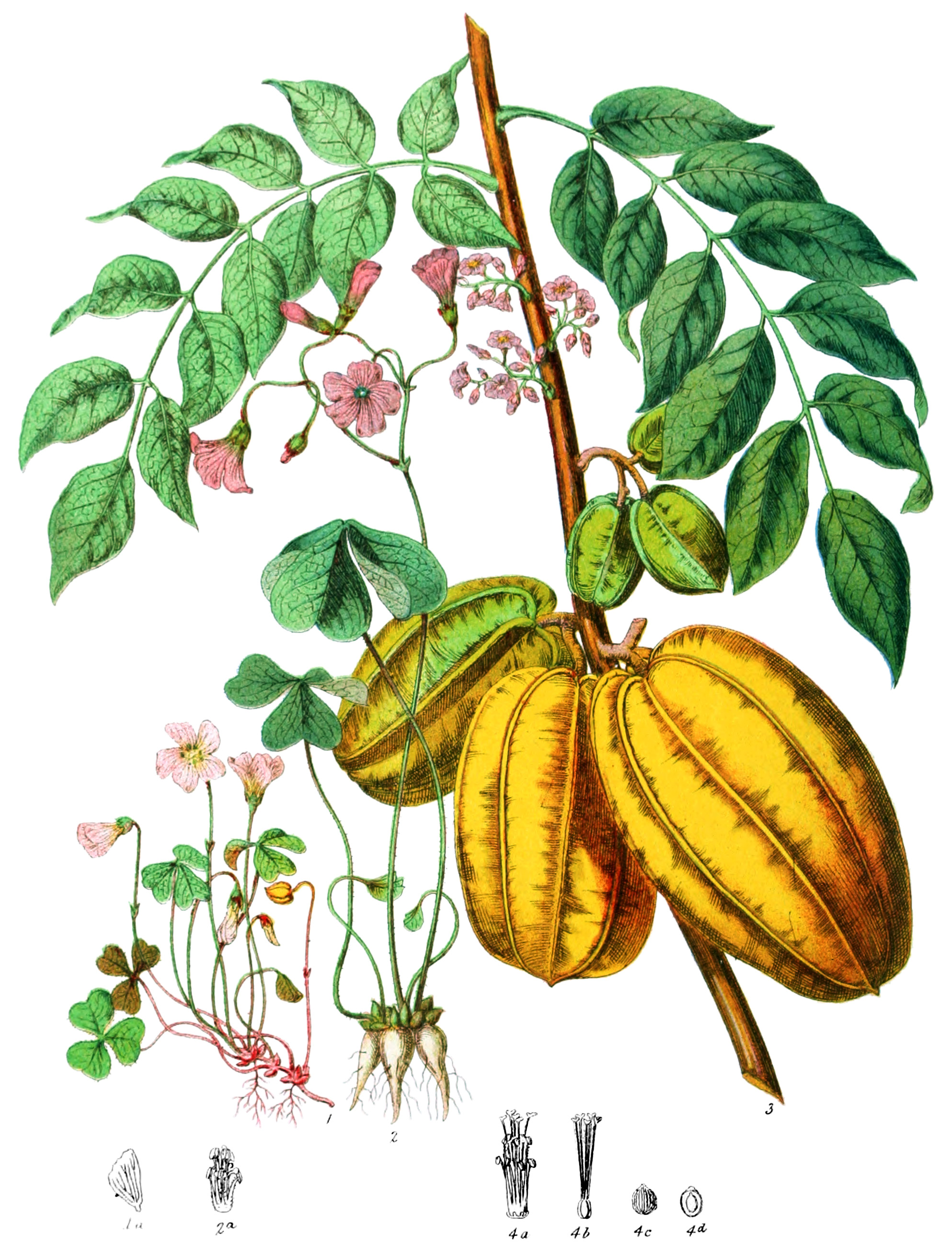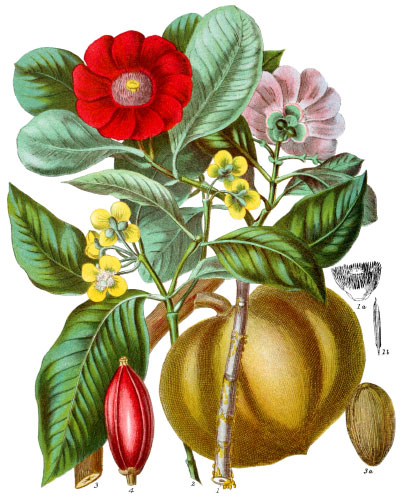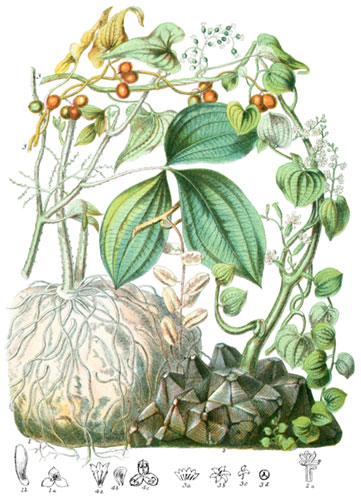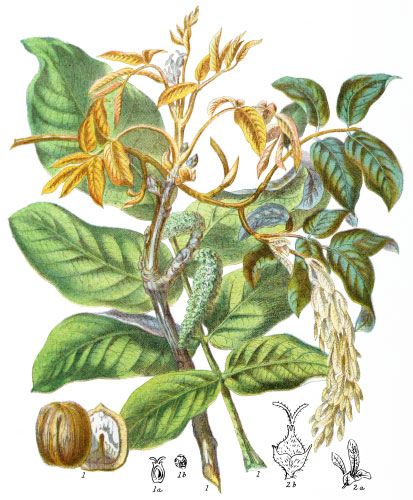Key characteristics
Trees, under-shrubs, and herbaceous plants; the leaves are alternate, occasionaly opposite, rarely having stipules; the roots of some are tuberculate or granulate. The sepals of the calyx are five, sometimes slightly cohering at the base, persistant, imbriated: the petals are five, of equal size, attached to the base of the ovary, having a claw at the base; spirally twisted in the bud, sometimes wanting. The stamens are ten, usually more or less united in a set at the base; those opposite the petals are longer than the rest, and form an inner series; the anthers are two-celled. The ovary has three to five cells, with as many slender styles; the stigmas are capitate, or somewhat bifid. The fruit is a capsule, rarely a bery, with five angles, and from three to five cells, and five to ten valves; when ripe, gaping longitudinally at the angles. The seeds are few, attached to the axis, or to plates in the angles of the cells; striated when young, enclosed in a fleshy covering, which curls back with elastic force when ripe, and expels the seeds. The seeds contain a tough, fleshy albumen.
This Order has considerable affinity with the Flax tribe, and also with Geraniaceæ.
Oxalic acid exists abundantly in these plants, as well as slightly astringent properties.
The genus now called Oxalis is not supposed to be the same as that known to the ancients; it includes numerous species, chiefly of slender, delicate growth: some have small bulbous or scaly roots, from which spring the slender leaf and flower-stalks.
Select plants in this order
Not all plants listed are illustrated and not all plants illustrated are listed.
- The delicate Oxalis acetosella (1) comes forth early in the year, adorning the still bare woods of this country, as well as on the continent of Europe, with its very graceful leaves and flowers. Several species have been observed to have sensitive properties in the leaves, and those of our Wood-Sorrel may be seen to close and droop at sunset, and to expand again into a horizontal position in the morning. The capsules possess also elastic power, and project the black shining seeds to a distance on the slightest touch, when ripe. Formerly this herb was used by thrifty dames for a conserve with sugar, and considered pleasant and wholesome from its acidity.
- O. corniculata is the other British species, the flowers of which are yellow, and the capsule of a more slender oblong form.
- O. floribunda (2) is an example of those species which bear several flowers on a kind of umbel, and have tuberous roots.
- O. crenata of Columbia has tubers as large as a potatoe, called by the natives Arracha; being of a very insipid nature, they are not cultivated: all the agreeable acid qualities are absorbed by the leaf-stalks, which are conserved.
- The larger tubers of O. Deppei are fleshy, and contain a starchy substance similar to salep in the root of some species of Orchis; these are used for culinary purposes.
- O. esculenta and others are said to be equally wholesome as food. Some few species have palmated leaves; others winged leaf-stalks. The cape of Good Hope is the chief station for Oxalis.
- Averrhoa was named in honour of Averrhoes, the celebrated Spanish commentator on Aristotle and Avicenna, in the early part of the thirteenth century.
- The fruit of A. Carambola (3) is eatable, although of not very agreeable flavour to Europeans; the five projecting angles of the fruit are singular, and distinguish it from all others. The branches and leaves have remarkable sensitiveness to the touch.
- A. Bilimbi, the Cucumber-tree of Goa, is much cultivated in India, especially on the banks of the Ganges. The flowers yield a juice of cooling qualities, which render it excellent in fevers; there is likewise a large proportion of pleasant acid juice in the fruit, very wholesome as food. Both these fruits are said to be employed by the natives in dyeing.
- Biophytum, or the Plant of Life, alludes in its name to the exceeding irritability of the pinnated leaves, which more on the least motion or touch; they are said to possess also bitter, tonic, and slightly stimulating properties.
Locations
These plants are natives of all the temperate and hotter countries of the world, but exist most abundanty at the Cape of Good Hope and in America; are more rare in the East Indies and in the equinoctial regions of Africa. The shrubs are confined to the hotter countries; a few of the herbaceous species are scattered over the temperate parts of Asia, and Europe.
Legend
- Oxalis acetosella, Wood-Sorrel. England.
- Petal.
- Oxalis floribunda, Many-flowered Oxalis. Brazil.
- Stamens and Pistil.
- Averrhoa Carambola, Carambola Fruit. East Indies.
-
- Oxalis confertissima. Stamens and Pistils.
- Pistils.
- Seed.
- Section.
Explore more
Posters
Decorate your walls with colorful detailed posters based on Elizabeth Twining’s beautiful two-volume set from 1868.
Puzzles
Challenge yourself or someone else to assemble a puzzle of all 160 botanical illustrations.





